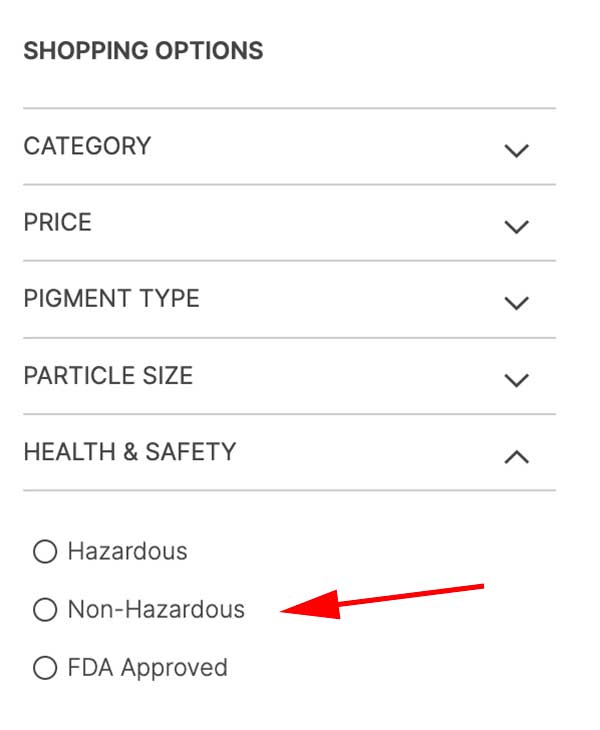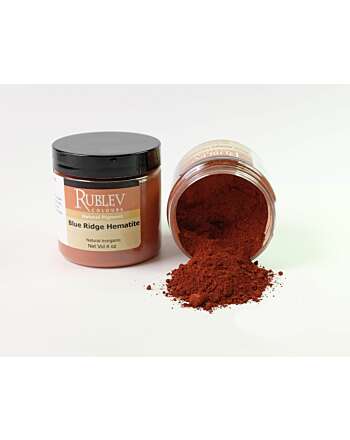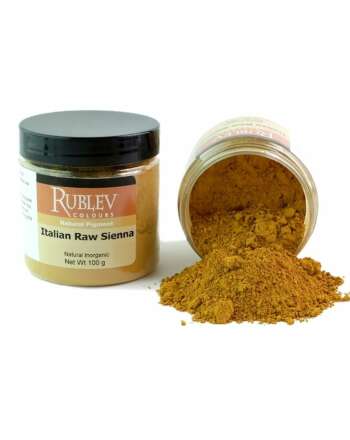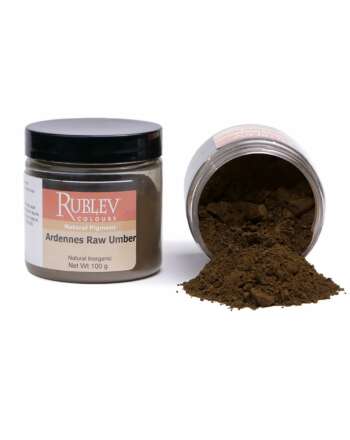

How to Shop for Natural and Non-Toxic Pigments
What are Natural Pigments?
Natural pigments are colored substances derived from natural sources, such as minerals, plants, and insects. The colorants may be ground, washed, and sifted but otherwise are not chemically modified. For example, the natural pigment yellow ocher is derived from the iron oxide mineral goethite found in many locations throughout the earth. The mineral is ground into small particles, washed, and sifted but remains an iron oxide mineral.
What Does Non-Toxic Mean?
“Non-toxic” is a claim with almost no regulation—it’s mostly a marketing term. Non-toxic means the product is not poisonous or doesn’t contain ingredients that have been linked to toxic responses (like hormone disruption, cancer, etc.) in humans. However, the marketing claim of non-toxic is usually restricted to the product’s intended application—not all possible uses of the product. So, a pigment may be considered non-toxic in an artist’s paint but not in cosmetics or food.
Pigments used in artists’ paint do not come in frequent contact with human skin and are less likely to be absorbed through the skin. On the other hand, pigments intended for cosmetics are applied to the skin, and those made for food are consumed. Manufacturers’ cannot anticipate every use of their products, so they may label them non-toxic for their intended use. Always determine the intended use of a pigment before selecting it for your application.

Are All Natural Pigments Non-Toxic?
We tend to believe that substances from Nature are safe and wholesome. But that is not always the case. While there are many natural pigments considered non-toxic, many pigments used throughout history are unsafe and quite toxic. Orpiment is a bright yellow pigment obtained from the deep-colored, orange-yellow arsenic sulfide mineral of the same name with the chemical composition of arsenic sulfide (As2S3). Arsenic, as we all know, is poisonous.
What’s the Difference—Artificial or Synthetic
 Artificial is anything that is made by humans rather than Nature. Synthetic is also something human-made but refers more specifically to chemical synthesis. Thus an item carved from wood would be artificial, while a pigment derived from a natural mineral and chemically altered into a new form would be synthetic.
Artificial is anything that is made by humans rather than Nature. Synthetic is also something human-made but refers more specifically to chemical synthesis. Thus an item carved from wood would be artificial, while a pigment derived from a natural mineral and chemically altered into a new form would be synthetic.
Synthetic pigments originate from natural sources, such as minerals or petroleum, but are modified so that the original material is now chemically different. For example, titanium white is produced from the natural mineral ilmenite. This black iron-titanium oxide mineral with a chemical composition of FeTiO3 is then chemically modified by a sulfate or chloride process to create a white pigment with the chemical formula of TiO2.
Are Synthetic Pigments Safe?
Many synthetic pigments produced today can be safely used in many different applications, such as in personal care products, cosmetics, and even food for human consumption. A well-known example is titanium white pigment, certain types of which are safe to use in food when it does not exceed one percent by weight. (See Title 21, Chapter I, Subchapter A, Part 73 of Food and Drugs.)
What Pigments Can Be Used in Cosmetics and Personal Care Products?
 Even if a pigment is considered non-toxic, it does not mean it is approved for use in personal care products and cosmetics. In the United States, pigments and color additives approved for such use are determined by the United States Food and Drug Administration and are listed in the Summary of Color Additives for Use in the United States in Foods, Drugs, Cosmetics, and Medical Devices. You can find this document online here.
Even if a pigment is considered non-toxic, it does not mean it is approved for use in personal care products and cosmetics. In the United States, pigments and color additives approved for such use are determined by the United States Food and Drug Administration and are listed in the Summary of Color Additives for Use in the United States in Foods, Drugs, Cosmetics, and Medical Devices. You can find this document online here.

How to Find Non-Toxic Pigments
 To see which pigments are considered non-toxic on this website, select Non-Hazardous in the shopping options filter on the left-hand side of any Pigment category page. (See the box to the left.) You can also narrow your search results by selecting Natural, Earth, or any other pigment type.
To see which pigments are considered non-toxic on this website, select Non-Hazardous in the shopping options filter on the left-hand side of any Pigment category page. (See the box to the left.) You can also narrow your search results by selecting Natural, Earth, or any other pigment type.
Why Use Natural Pigments?
Synthetic pigments today are made to serve the paint industry, in which producing paints for artists plays a minor role. To achieve maximum desirability in paint today, pigments are made homogenous in shape, size, and composition. For example, particle sizes are made as small as possible to increase the covering power of pigments. The smaller the particles, the more the color nuances of the pigment are reduced to its primary hue, as in inks with no texture. Particles that are homogenous in shape and size also tend not to settle quickly and separate from the binder during storage. This increases the shelf life and, thereby, the marketability of paint but reduces its beauty as a color for artists’ use. Anita Albus wrote in Art of Arts, “The result is not perfection, but sterility.”
Artists’ material manufacturers purchase most pigments from companies that mass-produce them for other uses. A few examples include ultramarine, cadmium, and phthalo colors. Oddly enough, painters are among the few artistic groups to succumb to economic pressures and use ready-made materials. Even in the applied arts such as cooking, producing their stocks and sauces is customary, even though commercially-processed alternatives are available.
On the other hand, we make our pigments to specifications that maintain their best qualities and allow artists to refine them for their use. You can use them as they come out of the jar or grind them and separate them into different grades for special visual effects. As you become more aware of these possibilities, you will want to experiment, paying attention to how the pigments look and behave when mixed with your favorite binder—oil, acrylic, egg, lime, casein, collagen glue, or gum arabic.
About Rublev Colours Pigments
Natural Pigments specially make Rublev Colours® natural mineral, organic, and historical powder pigments for artists. They are the same pigments used by ancient, medieval, and Renaissance painters. Each pigment can be used for different painting techniques. Whether a novice or an experienced painter, you’ll find Rublev Colours pigments well suited for use in aqueous mediums, such as egg and casein tempera, gum arabic (watercolor), hide glue (distemper), and acrylic dispersions. They perform equally well in oil and alkyd paint. Most are suitable for fresco and other painting techniques, such as encaustic.
 Rublev Colours pigments are made directly from mineral and organic sources. Our geologist, who has many years of experience selecting minerals for pigments, travels to distant locations and hand selects mineral ores for our pigments. We process the minerals by pulverizing, grinding, and levigating for use as fine artists’ pigments.
Rublev Colours pigments are made directly from mineral and organic sources. Our geologist, who has many years of experience selecting minerals for pigments, travels to distant locations and hand selects mineral ores for our pigments. We process the minerals by pulverizing, grinding, and levigating for use as fine artists’ pigments.
We travel worldwide to observe the growing and processing conditions of the natural materials used in our organic pigments. We inspect cochineal gathering at cactus plantations in Mexico, madder roots in Turkey, indigo vats in India, and logwood trees growing in Honduras.
At Natural Pigments, we remove the mystery of pigments by disclosing their source and known composition. We want you to gain the same intimate knowledge that the old masters had when they made their paint with pigments.
A Selection of Natural, Non-Hazardous Pigments
For the entire selection of natural and non-toxic pigments, please see Natural, Non-Hazrdous Pigments.










